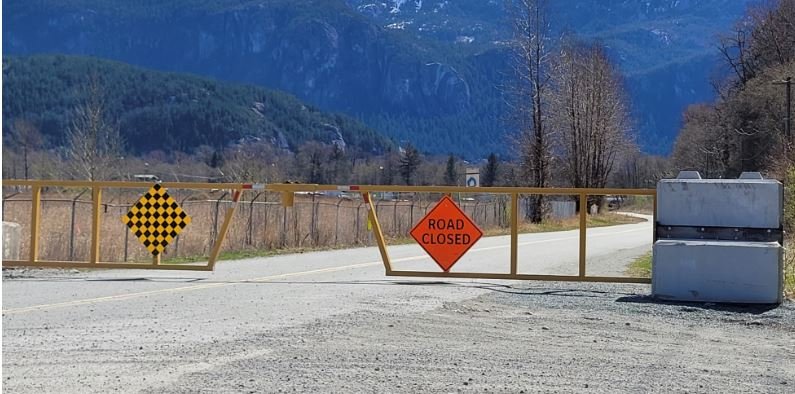
District of Squamish staff will report back to council regarding moving the gate at the northern end of Bailey Street further south to facilitate access for recreational users.
Responding to several letters of concerns, Councillor John French asked for the council to consider moving the newly-installed gate on the north end of Bailey Street further south.
French said several locals had written to ask why the northern gate was placed just south of the spit road, and not closer to the northern rail crossing.
“It is far more north than I anticipated, in light of the fact that CN says it wants to protect its rail crossings,” French said.
French said he raised the issue because he had heard from a number of people who wrote to him to express their frustration with the lack of access to the water, kayaking and paddling.
The present location of the gate makes it onerous for kayakers and paddlers to carry their equipment so they can access the estuary area, he added.
His questions followed a decision by the district to install gates on both sides of Bailey Street to fulfill a long-standing agreement with CN Railways that has allowed the district to use Bailey Street as an emergency access route.
The road was closed to fulfill a long-standing agreement with CN Railways that has allowed the district to use Bailey Street as an emergency access route.
This 1979 agreement required that the two rail crossings be gated to allow for emergency traffic only, a condition which the district has now met.
Gary Buxton, the general manager of Community Planning and Infrastructure, said the gate had been installed further north of the railroad tracks to discourage illegal dumping and camping.
“We can move it but I suspect that some of that less desirable activity might follow,” Buxton said.
Councillor Eric Andersen supported French and said he had also heard from concerned paddlers about scarce access to recreation. He said there was a need to monitor recreational access and manage the potential for illegal dumping and camping.
Coun. Doug Race also supported the motion of staff brining back options and said he would not want to facilitate illegal dumping but would also like to help the paddling community on access.
Coun. Jenna Stoner raised concerns about recreational access to sensitive area.
“I am a bit challenged for whether we want recreational access through a fairly sensitive estuary area. There have been complaints about some of the birders about continued access in the area during bird-nesting season,” she said.
CN Rail didn’t respond to queries on why it decided this year to implement an agreement from 1979.
“At this point, there is nothing we would add to what is on the website,” said Jonathan Abecassis, a media relations officials for CN Rail.



Martyn says
As a local watersport enthusiast, kiteboarder, paddleboarder and kayaker that lives in downtown squamish.
In my opinion. There are still viable access points to the estuary. But one has also to be aware of the tidal situation. And therefore, for example, water access from Bailey Street is only useful at certain times of the day. This proves to be a great natural human filter for the wildlife that call that place home.
I for one, also cycle in that area. And with the gates now closed to cars and trucks. Find the bike ride much more naturalistically enjoyable, free from those dust churning speeding vehicles.
I admit, that I myself will now have to drive around to access the spit road entrance. But in reality that’s a minor inconvenience. And I’m happy with the trade-off.
With so much destructive development occurring downtown. I embrace and respect what little naturalness still remains.